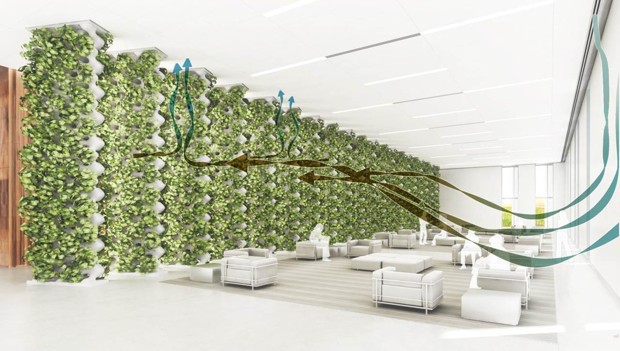| |
 Posted May 12, 2015, 5:46 PM
Posted May 12, 2015, 5:46 PM
|
 |
Registered User
|
|
Join Date: Aug 2002
Location: Toronto
Posts: 52,200
|
|
|
How Germs Might Shape the Future of Architecture
How Germs Might Shape the Future of Architecture
May 11, 2015
By VICKY GAN
Read More: http://www.citylab.com/navigator/201...ecture/392783/
Quote:
We know that buildings can make us sick. Take, for example, cases of lead poisoning, mold exposure, or the aptly named Sick Building Syndrome. But can they also make us healthier? Scientists are trying to answer that very question, starting with detailed studies of the microbes that populate our homes and offices. The end goal? Using this information to design structures constructed with bodies in mind.
- We’ve long treated bacteria as the enemy. But it turns out that few of the germs we’re constantly trying to kill with hand sanitizer actually cause disease—and the more bacteria we have on the whole, the better. In fact, our habit of ultrasterilization appears to be hurting us. --- A number of recent studies have lent credence to the so-called “hygiene hypothesis,” which attributes the uptick in autoimmune and allergic diseases, including eczema and asthma, to a lack of early childhood exposure to germs. - So how do we get that healthy exposure to bacterial flora when we spend more than 90 percent of our time indoors? That’s the focus of an emerging field, so new that it doesn’t even have a proper name yet.
- Indoor microbiomes demand a unique program of study because they’re fundamentally different from ones found in nature—and because we spend so much time in them. We control the growth of indoor bacteria in countless ways, from ventilation and plumbing to sterilization and foot traffic, and we leave bacterial signatures wherever we go. --- As a result, these indoor ecosystems end up looking a lot like us: human-associated bacteria are more than twice as plentiful in indoor air compared with outdoor air, meaning that when you’re inside, you’re breathing in a lot of your own germs.
- Do building materials affect how bacteria behave? That’s what Jack Gilbert, an environmental microbiologist at the University of Chicago, is investigating. He examines the metabolism of specific microbes under different indoor conditions. He’ll spray bacteria onto a variety of materials, such as steel, wood, and copper, looking for changes in their growth and proliferation, and he’ll adjust certain environmental variables, such as temperature and humidity—things humans like to control. --- “Our aim is to see how those kinds of building operation parameters alter the growth and the activity of these microbial worlds,” Gilbert says.
- As evidence continues to mount against ultrasterilization, scientists are looking for alternatives that nurture, rather than eradicate, microbial communities. --- One way is through “bio-active” surfaces, permeable nanostructures with “good” bacteria stitched inside. Built into walls, chairs, carpets, and other indoor fixtures, these living surfaces would continuously secrete beneficial microbes into the indoor environment. In laboratory tests with mice and rats, these bio-active structures have been found to reduce the likelihood of allergic reactions and asthma attacks. --- “Instead of building new buildings per se, we could just refurbish all the existing buildings in Manhattan or downtown Chicago with bio-active walls or bio-active carpets,” Gilbert says.
- It’s possible that a bug could, under certain conditions, cause a disease outbreak, notes Gilbert. --- “If we keep [bacteria] … inside walls, they’re much more stable and much less likely to potentially go rogue, versus putting them in little water droplets and dispersing them through the air, when they’re biologically active,” he says. --- It might be simpler, Gilbert suggests, to ask everyone to buy more houseplants. In any case, it will be some time before we see such aggressive attempts to alter the indoor microbiome, simply because there’s still so much we don’t know about microbial impacts on human health.
.....
|
Cross-section of New York's bio-inspired Public Safety Answering Center II. (SOM)
 Rendering of a green wall in Public Safety Answering Center II. (SOM)
Rendering of a green wall in Public Safety Answering Center II. (SOM)

__________________
ASDFGHJK
|
|
|



